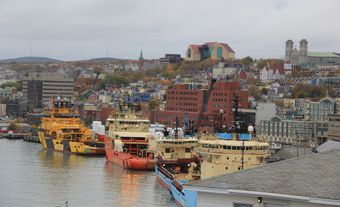Glenbow Museum
Museum, art gallery, library and archives, Glenbow specializes in documenting the history of the settlement of Western Canada. Glenbow was founded in 1954 by oilman and philanthropist Eric L. Harvie as an outgrowth of his personal interest in collecting memorabilia. In 1966 its assets were donated to the people of Alberta and the Glenbow-Alberta Institute was formed to administer the huge collections of artifacts, paintings, books and documents. In 1976 the government of Alberta constructed a large 8-storey structure in downtown Calgary, providing 3 floors or 8361 m2 of exhibition space. Twenty years later, in 1996, Glenbow ceased to be a Crown organization and became instead an autonomous non-profit corporation, caring for the collections and making them accessible to the general public under a fees-for-services contract with the provincial government.
Glenbow is Western Canada's largest museum, offering a variety of exhibitions and events throughout the year. Its art collections, displayed on the second floor, combine contemporary works by Alberta artists with historical Canadian artworks. The art collections hold more than 26 000 pieces and include works by such well-known figures as Paul Kane, Carl Rungius, Belmore Browne, W. J. Phillips, F.A. Verner, Albert Bierstadt and A.F. Kenderdine. Special exhibitions introduce paintings, sculpture, and photography from world collections.
The third floor documents the settlement of Western Canada with exhibits tracing the lives and traditions of First Nations peoples and the development of the railway with the consequent swell of immigrants. It also looks at the hardships and joys of ranching and farming in the Calgary area and growing up in the West in the past 100 years. With artifacts ranging from a Blackfoot tipi and the elegant quillwork of the Plains Cree to the precious belongings of early European settlers and the hard-won comforts of a settler's cabin, Glenbow introduces visitors to Canada's Western heritage.
Glenbow's international displays are found on the fourth floor where three exhibitions showcase the diversity of its collections: Where Symbols Meet: A Celebration of West African Achievement explains status and achievement in West Africa; Warriors: A Global Journey Through Five Centuries documents the stories of warriors throughout the ages; and Treasures of the Mineral World displays rocks, minerals and precious gems. The combination of historical and ethnological artifacts found at Glenbow exceeds 192 000 objects with approximately 28 800 in the mineralogy collection.
Glenbow's sixth floor houses a comprehensive archives of more than 2 million images and more than 3.5 kilometres of unpublished manuscripts, records, papers, journals, letters, and diaries of Western Canadian history. Located on the same floor is a reference library of more than 100 000 books, periodicals, newspapers, journals, catalogues and rare maps also focussing on Western Canada.

 Share on Facebook
Share on Facebook Share on X
Share on X Share by Email
Share by Email Share on Google Classroom
Share on Google Classroom




